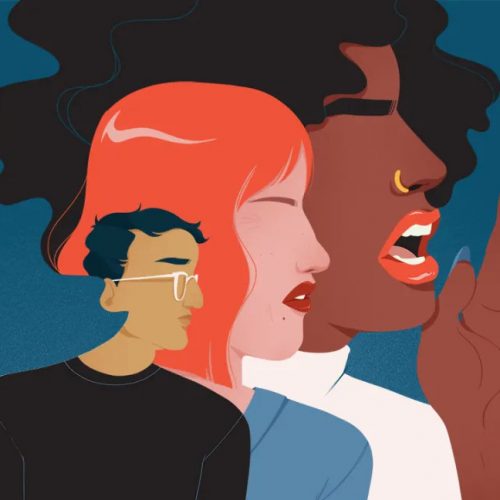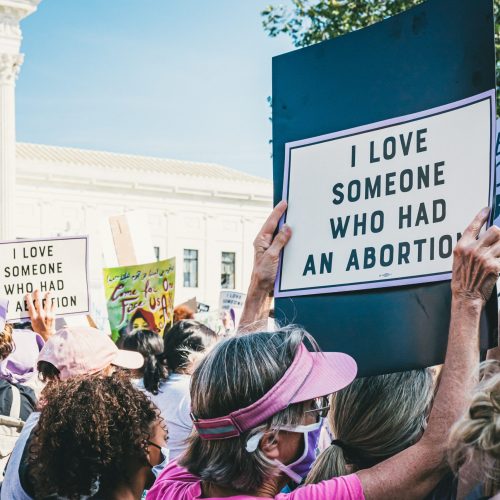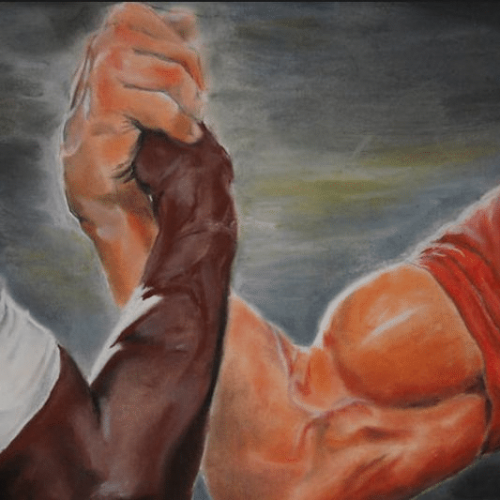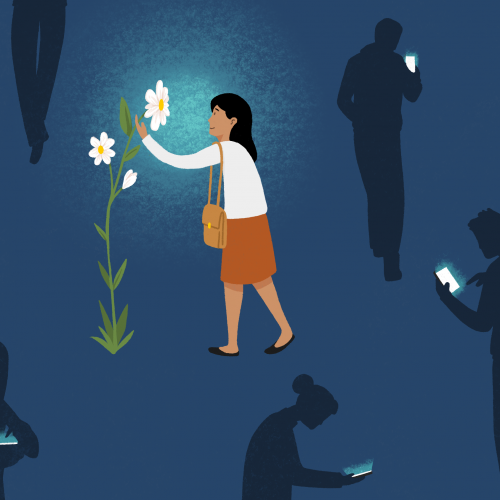It’s a casual Thursday evening and not much is going on in Cairo, for once. Except for this party, organized by a somewhat popular collective around town that I had heard mixed opinions about. A close friend of mine is invited to cover the event and shoot some slick shots of the night. So naturally, I decided to tag along.
We’ve made our first few steps into the concert hall and notice that the venue is far from reaching its maximum capacity, although it’s quite late by this point. That’s the moment I start remembering what people had previously said about that night and also start thinking that maybe they were right and I should’ve stayed home.
Speakers are on full volume, we can barely hear each other. My tired eyes are the only tools I can work with to communicate and spot things out of the depleting crowd. I end up noticing two girls being made to feel uncomfortable by a group of too-old-to-be-there party-goers and decide to call their behaviour out. The conversation starts getting heated until organizers calm things down.
The night follows its course, I’m dancing and trying to somehow enjoy my night given what had just happened. Everything is going relatively well until I feel a hand drag me out of the crowd. I turn round and see a much larger group now, shouting and promising that I’ll never be able to chew on an apple ever again. More fear than harm in the end even if I was still asked to leave the premises although I had done nothing wrong, and in fact, in my eyes at least, felt like I had done the right thing.
Nightlife safety is a real concern for everyone in the underground scene. Trust is earned in droplets and is lost in liters when it comes to these matters, and ensuring you have a safe space to party is, surprisingly, still causing troubles. My experience is probably one out of so many although organizers are well-aware that the region’s scene is always one OD, sound complaint, fight or, more specifically, a police visit away from being shut down completely.
“A safe space is creating an environment that is simultaneously safe for self-expression through a dance floor that people enjoy being on, as well as safe from a health and safety standpoint. That means no exposed electrical wiring, no places for people to trip, sharp edges, low ceilings, and proper warning material to prevent people from getting harmed. A step further is easy access to water, which should be the cheapest on the menu, if not free ideally, but that isn’t always the case.” says Yaseen, producer and event planner in Cairo.
“Organisers and venues shouldn’t be trying to make 100% or 200% margins on water. It’s not only obscene but totally irresponsible because you end up putting the crowd in a position where they have to make sure they have enough money for a basic necessity. You make them have to do these mental calculations about whether to spend their money on water or drinks over the course of a night, which is anything but safe and sustainable” he went on to say. “The way you price things is important. Safe also means not abusing people’s wallets just because you can. Yes, you have to take care of your costs and the artists you invite but that care should apply to the crowd too as they’ll end up leaving if they feel like you’re squeezing them for cash.”
And he’s got a solid point. Whether you want to admit it or not, all sorts of substances go around concerts regardless of how hard you are trying to prevent them. When that element is taken into account, it really is no rocket science: bodies are dancing, moving and sweating and when intaking any kind of stimulant, your organism finds itself in dire need of hydration. If it is not provided, the end result could be fatal.
According to a recent report on the prevalence of substance use among Egyptian adolescents, it has been found that after the exclusion of nicotine, benzodiazepines were the commonest substance abused (5.1%) followed by alcohol (3.3%) and organic solvents (3.1%) – daunting numbers that support Yaseen’s claim and that opens the door to other conversations.
“When you’re dealing with a sexually repressed country, you do need to be conscious of the male to female dynamics and more broadly speaking inter-gender interactions in the crowd. The unfortunate reality is that the women who support underground artists at events have to take into account a certain level of risk every time they set foot in these spaces. Organisers need to take the proper steps to ensure that the environment they’re asking people to put themselves into is actually safe. ” Yaseen told Mille.
Most of us probably think of door selections as the ultimate measurement of cool. Put it this way, the less hassle you have at a venue’s first steps, the suaver you look and the edgier you feel. But in reality, it should be the first in-person fence to prevent dangerous behaviours from walking into the party.
“Door selection is the first thing you go through. It’s a very crucial step as sometimes people who look the best turn out to be the worst. It doesn’t always have to be about how you look, but rather instead, the energy you bring along with you. Guests have to come with open hearts, open ears and most importantly, open minds to walk into our events. Having like-minded individuals on our dance floors is one of the main building blocks of our community as house rules are important, yes, but they’re not the only ingredients to building a safe space for all,” said Ali Ashraf, another prominent actor in Cairo’s underground scene. “People who are perceived as threats to other guests are asked to leave the premises and blacklisted from future events. This should be the standard everywhere,”
Building a safe space is not only important but quite frankly vital not only for the scene but also for the people that find liberating comfort in them. At a previous event, much better I must say than the one mentioned above, I met Henney, a transgender woman living in Cairo who was kind enough to share some of her insight as to how she feels when attending these events. Although still problematic, she insists that they represent a breath of fresh air from their usually suffocating daily life experiences.
“We are seen as illegal on the streets and so basically non-existent, so going to spaces where we can be ourselves and meet people like us, is a getaway from the “real world”. Especially for queer people in the global south, these parties help us feel human again. For me, for example, before I started transitioning and had the confidence to walk out on the streets as myself, I went to parties to be who I am and display my authenticity. It also really helps with future problems pertaining to transitioning people such as body dysmorphia or gender dysphoria which I find beautiful,” Henney told me over the phone.
With the above in mind, reducing parties to events where people simply go to have fun wouldn’t be fair. They are actual catalysts for change and spaces where people feel the most free. We should carefully treat them as such to avoid spillover effects on the whole scene as well as stray away from detrimental consequences on real people’s lives – some real food for thought for everyone involved.









